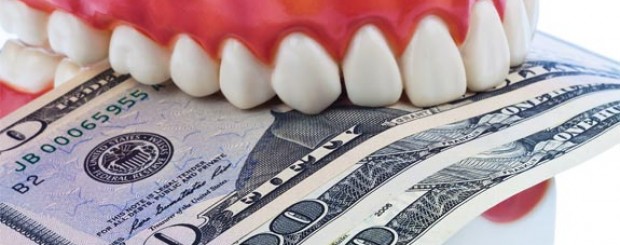5 Ways to Save Money On Dental Care
A root canal could set you back over $1,000. A set of braces for your son could be more than $4,000. And, a deep cleaning for delaying your checkup at the dentist might cost you a couple hundred.
Dental care expenses can really add up. And, the cost of dental care is the main reason why people delay their dental visits, according to a 2012 Consumer Reports survey.
At the same time, adult dental services is one of the most common health insurance exclusions (read more), and, traditional Medicare generally does not include dental benefits. In addition, approximately 130 million Americans do not have any form of dental insurance, according to a 2012 U.S. Senate report.
And even with dental insurance, your typical maximum benefit for dental care services covered is $1,000 to $1,500. After that, the rest of your dental costs will be out-of-pocket.
The good news is that there are ways to save money on dental care. Here are 5 tips that can help you do that.
- Visit an accredited dental school: Many universities offer dental care services for a fraction of what you would normally pay at a practice. The work is done by students under the guidance of a seasoned instructor, plus the tools and equipment are often up-to-date. But, the services at a university typically take more time and there might be a waiting list to get in. You can check the American Dental Association (ADA) for a list of accredited dental schools at universities across the country to see if one is near you.
- Join a dental savings plan: Non-insurance dental savings plans can save you anywhere from 20% to 60% off the regular cost of dental care procedures. In exchange for a low monthly fee, you get a membership, a list of in-network dentists, and a discount on services when you visit those providers. And, some plans include orthodontic procedures, as well as discounts on vision, hearing and other ancillary services typically excluded from your health insurance. You can search for plans and options in your area through companies that are members of the Consumer Health Alliance.
- Saving on braces: Orthodontic procedures and braces are typically excluded from dental insurance, so your out-of-pocket costs can be thousands of dollars. To save money on braces, get an estimate, check what the normal price should be in your area at FAIR Health, and consider negotiating or finding a new provider if you need to. You can also check to see if you’re eligible for free orthodontic care through the Smile For A Lifetime Foundation.
- Keep up with your dental care: Like most of our healthcare, preventive care is the key –brushing twice a day, flossing daily and keeping your bi-annual teeth cleaning appointment at the dentist. This will help you to avoid costly problems in the future. Especially for dental care. A cavity that might cost you a few hundred to fill now could lead to a root canal procedure down-the-road that will cost you hundreds more. For additional tips and information about oral health, visit the Mouth Healthy website brought to you by the ADA.
- Additional resources: The National Institute of Dental and Craniofacial Research features a list of organizations and resources for people to find ways to save money on dental care, including clinical trials, dental hygiene programs, and federally-funded community health centers where you pay what you can afford.
(Image via Money Crashers.)

